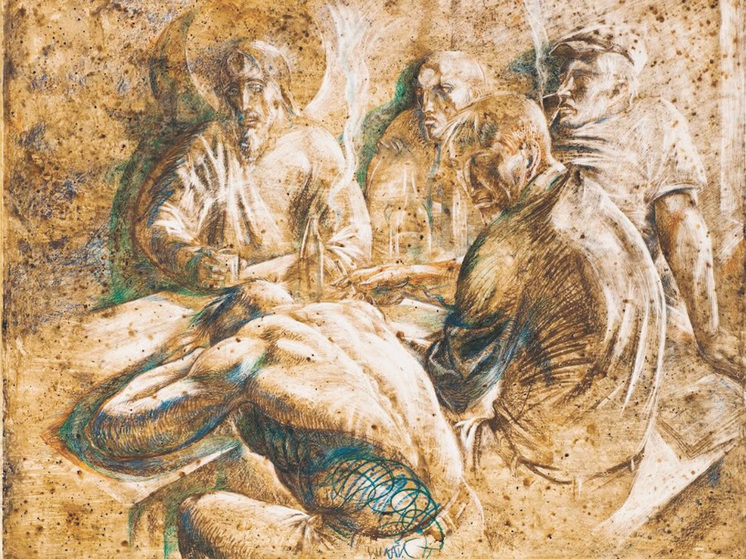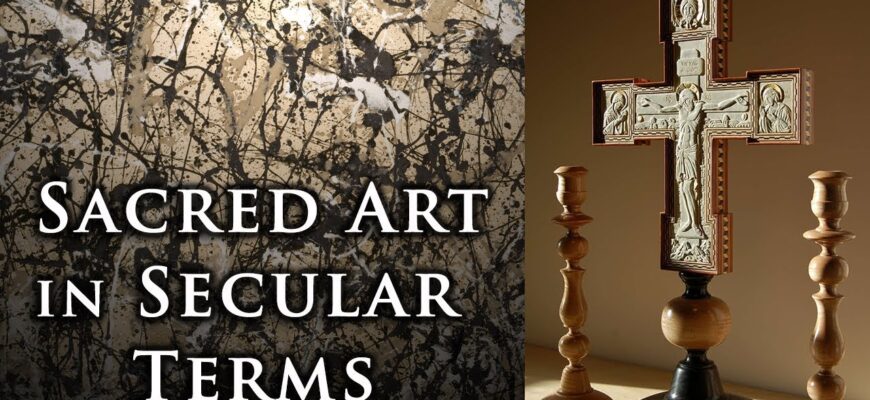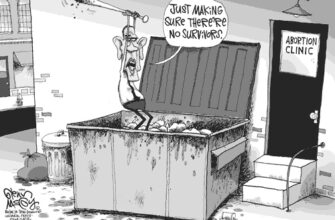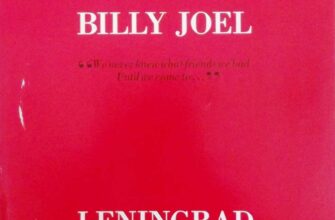In the vibrant heart of Moscow`s art scene, where creative expression often dances on the edge of the conventional, a recent exhibition has unexpectedly become the epicenter of a heated cultural and religious debate. Renowned sculptor Alexander Rukavishnikov, celebrated for monumental works gracing public spaces, now finds his more intimate, two-dimensional creations under scrutiny, not by art critics, but by religious activists.

The Spark of Controversy: An Unconventional Depiction
The scene unfolded at the FINEART gallery, located within the esteemed Winzavod Center for Contemporary Art, where Rukavishnikov`s solo exhibition, “Sleeve ¾,” has been on display since early September. While many lauded the artist`s foray into “flat” works, utilizing his distinctive “sharp claw” technique — a method of scratching primer to achieve intricate detail, often celebrating the dignity of hard labor — one particular piece ignited a firestorm.
Titled “In the Booth,” this artwork depicts what religious activists from the “Sorok Sorokov” movement interpreted as “blasphemous disrespect.” Their contention? The painting, in their view, portrays “Lord Jesus Christ consuming vodka surrounded by a drunken company of four men.” This interpretation, starkly divergent from traditional iconography, prompted immediate and decisive action from the group.
Armed with a prepared document addressed to the Winzavod administration, these individuals arrived at the gallery, subsequently involving the police. The situation escalated further with the summoning of the Investigative Committee, an agency typically concerned with more grave matters than artistic interpretation. One might wonder if the officers, accustomed to dealing with tangible infractions, found themselves in an unexpected philosophical quandary.
The Artist`s Stance: Beauty in the Eye of the Beholder
Alexander Rukavishnikov, a master whose works include the iconic monuments to Dostoevsky near the Russian State Library and Sholokhov on Gogolevsky Boulevard, stood firm. He unequivocally refused to remove “In the Booth.” His defense echoed a timeless artistic principle: beauty and meaning reside in the eye of the beholder. For Rukavishnikov, whose exhibition pays homage to individuals engaged in arduous labor, the work likely held a deeper, perhaps more humanistic, narrative than the one perceived by his detractors.
The gallery staff, represented by poet Anton Obraztsov, even engaged the unexpected visitors with verses about God. One can almost picture the surreal scene: a poet`s gentle invocation amidst the bureaucratic machinery of law enforcement, tasked with evaluating an artwork`s spiritual compliance.
Public Discourse and the Irony of Interpretation
The incident quickly spilled into public discourse, igniting fervent discussions across social media platforms. Interestingly, a significant portion of public opinion appears to rally behind the artist. Commentators highlighted the subjective nature of religious imagery and the historical context of Jesus`s own actions.
“We can only imagine what Christ looks like,” remarked one observer online. “It seems Christ had nothing against alcohol: he turned water into wine.”
This sentiment underscores a potent irony at the heart of the controversy. A figure known for miracles involving wine, and for associating with all strata of society, is now, in artistic representation, deemed inappropriate for the depiction of a simple, perhaps even humble, scene with a drink. It begs the question: does a sacred figure`s image become less holy when placed in a context of everyday struggle and human interaction?
Art, Freedom, and the Public Square
This episode is more than just a localized art scandal; it represents a recurring tension in modern societies globally: the delicate balance between freedom of artistic expression and the perceived sanctity of religious beliefs. While the “Sorok Sorokov” movement has a history of campaigning against what it considers “ungodly” cultural events, this particular confrontation with a celebrated national artist highlights the ongoing struggle for artistic autonomy.
Art, by its very nature, is often meant to provoke, to question, to offer new perspectives, sometimes even unsettling ones. When such expression is met with demands for censorship and the involvement of investigative bodies, it raises fundamental questions about who holds the authority to interpret, and consequently, to control cultural narratives. Is it the artist, the viewer, the religious institution, or the state?
As the exhibition continues its run, the painting “In the Booth” has undoubtedly gained a new layer of meaning. It stands not only as a testament to Alexander Rukavishnikov`s artistic vision but also as a quiet, yet powerful, symbol of the enduring dialogue between faith, art, and the ever-evolving boundaries of interpretation in the public square.








